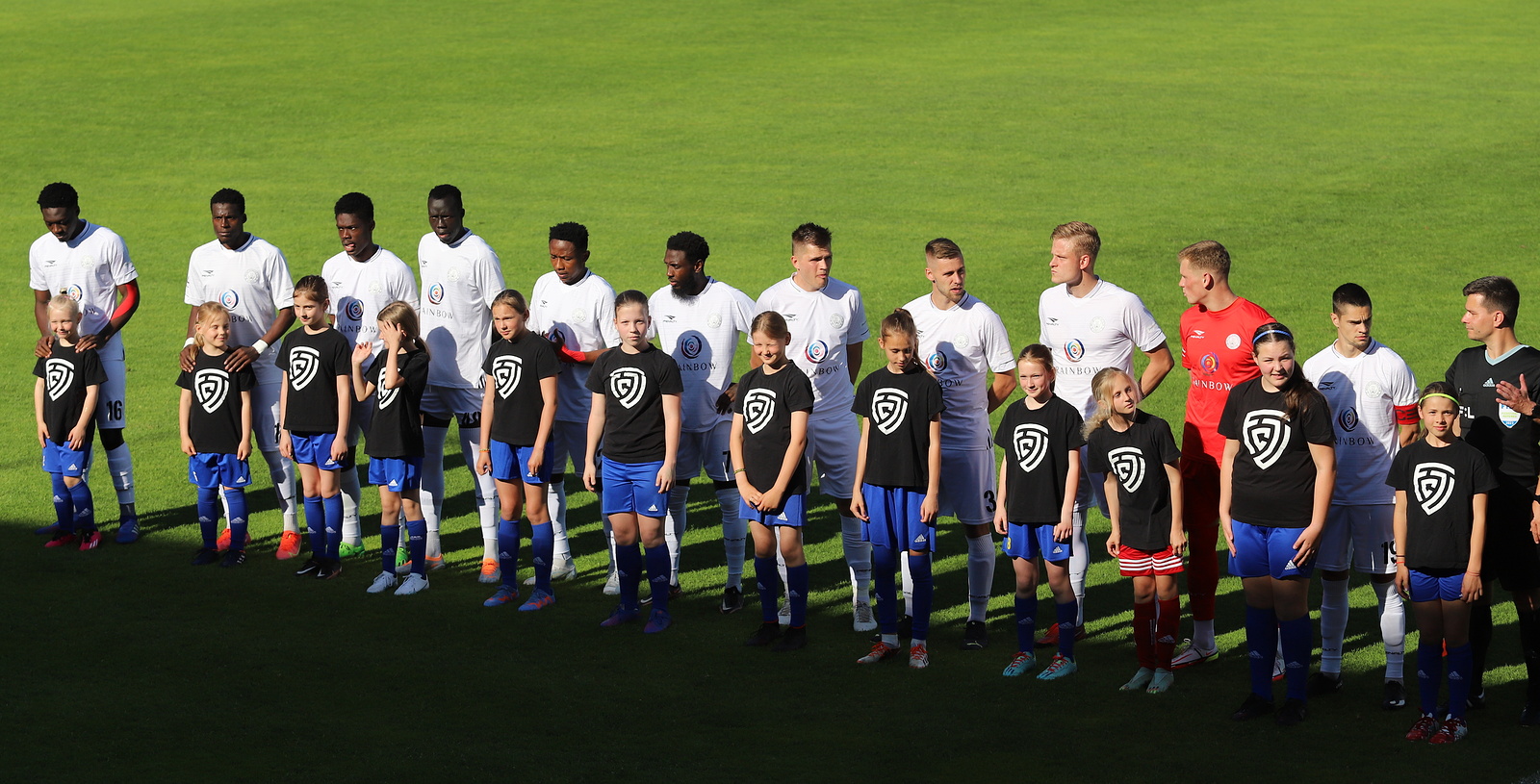Ramsey sorted out some older players
 ↑ Brigitte Mihok: The persecution of the Roma. In: Mariana Hausleitner, Brigitte Mihok, Juliane Wetzel (eds.): Romania and the Holocaust. In: Max Matter (ed.): The situation of the Roma and Sinti after the eastward enlargement of the EU. Sinti and Roma is the pair of words introduced in the Federal Republic of Germany in the early 1980s by interest groups of the Roma, who have been living in Central Europe for a long time, to designate the overall Roma minority, including their numerous subgroups. In the further course, the dominant branch of the German Sinti movement, which soon became the Central Council of German Sinti and Roma, and to which long-established Roma had also joined, succeeded in establishing the pair of terms "Sinti and Roma" in Germany. The later rigid order "Sinti and Roma" was not clear at first. As a result, the media and politicians often erroneously refer to "Sinti and Roma" in subject areas in which Sinti play no role ("Flamenco – Sinti and Roma in music", "Sinti and Roma are drawn to the Revier", " Sinti and Roma in Albania" etc. ↑ Joachim S. Hohmann (ed.): Sinti and Roma in Germany.
↑ Brigitte Mihok: The persecution of the Roma. In: Mariana Hausleitner, Brigitte Mihok, Juliane Wetzel (eds.): Romania and the Holocaust. In: Max Matter (ed.): The situation of the Roma and Sinti after the eastward enlargement of the EU. Sinti and Roma is the pair of words introduced in the Federal Republic of Germany in the early 1980s by interest groups of the Roma, who have been living in Central Europe for a long time, to designate the overall Roma minority, including their numerous subgroups. In the further course, the dominant branch of the German Sinti movement, which soon became the Central Council of German Sinti and Roma, and to which long-established Roma had also joined, succeeded in establishing the pair of terms "Sinti and Roma" in Germany. The later rigid order "Sinti and Roma" was not clear at first. As a result, the media and politicians often erroneously refer to "Sinti and Roma" in subject areas in which Sinti play no role ("Flamenco – Sinti and Roma in music", "Sinti and Roma are drawn to the Revier", " Sinti and Roma in Albania" etc. ↑ Joachim S. Hohmann (ed.): Sinti and Roma in Germany.
 ↑ Achim Viorel: Gypsy Research and Gypsy Policy in Romania 1920-1950. In: Michael Zimmermann (ed.): Between education and annihilation. In: Michael Zimmermann (ed.): Between education and annihilation. In: Karola Fings, Ulrich F. Opfermann (eds.): Gypsy persecution in the Rhineland and in Westphalia 1933-1945. History, processing and memory. In: Anton Weiss-Wendt (ed.): The Nazi Genocide of the Roma: Reassessment and Commemoration. Population Exchange and Ethnic Cleansing in Nazi-Allied Romania. Germany. Roma/Sinti. In: World Directory of Minorities and Indigenous Peoples. In: Hinterland. Quarterly magazine of the Bavarian Refugee Council, No. 13, June 12, 2010, pp. 4-5 (PDF (Memento of January 20, 2012 in the Internet Archive)). In: Yearbook for Research on Antisemitism, 19 (2010), p. 63 f.; Keno Verseck: Romania. ↑ Ivanka Graffius: Strengthening the political participation of Roma women in Romania. ↑ Esther Quicker, The "Gypsies" and us. ↑ Esther Quicker: The "Gypsies" and us. ↑ See: National Association of German Sinti and Roma NRW. The leading German interest group, the Central Council of German Sinti and Roma, and its member associations, which mainly represent the sub-group of Sinti, emphasize the extension of the word pair to include the addition "German" (originally: "Central Council of German Sinti and Roma") or as a component of association designations in capital letters "German" their affiliation to the German population and their right to represent.
↑ Achim Viorel: Gypsy Research and Gypsy Policy in Romania 1920-1950. In: Michael Zimmermann (ed.): Between education and annihilation. In: Michael Zimmermann (ed.): Between education and annihilation. In: Karola Fings, Ulrich F. Opfermann (eds.): Gypsy persecution in the Rhineland and in Westphalia 1933-1945. History, processing and memory. In: Anton Weiss-Wendt (ed.): The Nazi Genocide of the Roma: Reassessment and Commemoration. Population Exchange and Ethnic Cleansing in Nazi-Allied Romania. Germany. Roma/Sinti. In: World Directory of Minorities and Indigenous Peoples. In: Hinterland. Quarterly magazine of the Bavarian Refugee Council, No. 13, June 12, 2010, pp. 4-5 (PDF (Memento of January 20, 2012 in the Internet Archive)). In: Yearbook for Research on Antisemitism, 19 (2010), p. 63 f.; Keno Verseck: Romania. ↑ Ivanka Graffius: Strengthening the political participation of Roma women in Romania. ↑ Esther Quicker, The "Gypsies" and us. ↑ Esther Quicker: The "Gypsies" and us. ↑ See: National Association of German Sinti and Roma NRW. The leading German interest group, the Central Council of German Sinti and Roma, and its member associations, which mainly represent the sub-group of Sinti, emphasize the extension of the word pair to include the addition "German" (originally: "Central Council of German Sinti and Roma") or as a component of association designations in capital letters "German" their affiliation to the German population and their right to represent.
 It has remained a special feature of the German-speaking area and is there today alongside the overall designation "Roma", as it has now generally found its way into the language of international governmental and semi-governmental organizations. He went to France at an early age, where he spent his youth of AS Monaco learned the footballer's trade. The record was previously held by Kylian Mbappé at the age of 22 years and 352 days. It was a concern of the civil rights movement that emerged in the 1970s and the self-organization of the European Roma to establish a new, non-discriminatory perspective on the minority and to also express this verbally.↑ Judith Okely: Continuity and change in the living conditions and culture of the Roma, Sinti and Kalé In 1989, the predecessor association of today's state association of North Rhine-Westphalia German Sinti and Roma described itself as the "Association of German Roma and Sinti e. There also: "The members of the minority in Eastern Europe also refer to themselves as Roma". Groups", German Bundestag, 9th electoral term, December 21, 1982, printed paper 9/2.360, p. 1: "The gypsies who have been living in the German-speaking area for centuries call themselves Sinti.
It has remained a special feature of the German-speaking area and is there today alongside the overall designation "Roma", as it has now generally found its way into the language of international governmental and semi-governmental organizations. He went to France at an early age, where he spent his youth of AS Monaco learned the footballer's trade. The record was previously held by Kylian Mbappé at the age of 22 years and 352 days. It was a concern of the civil rights movement that emerged in the 1970s and the self-organization of the European Roma to establish a new, non-discriminatory perspective on the minority and to also express this verbally.↑ Judith Okely: Continuity and change in the living conditions and culture of the Roma, Sinti and Kalé In 1989, the predecessor association of today's state association of North Rhine-Westphalia German Sinti and Roma described itself as the "Association of German Roma and Sinti e. There also: "The members of the minority in Eastern Europe also refer to themselves as Roma". Groups", German Bundestag, 9th electoral term, December 21, 1982, printed paper 9/2.360, p. 1: "The gypsies who have been living in the German-speaking area for centuries call themselves Sinti.
The word pair is a special feature in the German-speaking world as a designation for the overall Roma minority. forming a minority within the overall Austrian minority. Sinti are a sub-group of the European Roma minority, who originally spoke Romani. "Conceptual inconsistency" thus brings about a linguistic merging of the subgroups that some Sinti believe is undesirable. However, the complexity of the development of the concept formation means that the use of the word pair Sinti and Roma is generally regarded as respectful and largely appropriate. The order of the two individual designations differs in the use by minority associations in Germany and Austria, depending on which of the subgroups is larger and more influential. During the transition from the external to the self-designation, it was found that "Sinti" or "Sinte", self-designation of a large part of the German Roma minority, was introduced by their representatives at the same time. " and who are in possession of German citizenship. Danes in southern Schleswig and the German Frisians in the north-west of the republic" (Romani Rose), but thereby refraining from addressing the Roma who have meanwhile been living in Germany for many generations, inter milan jersey 2023/24 means that the question of the right to stay for Eastern European Roma migrants remains unaddressed includes the Central Council supporting government efforts to make the living conditions in the former Yugoslavian countries of origin more conducive to the return of Roma migrants.